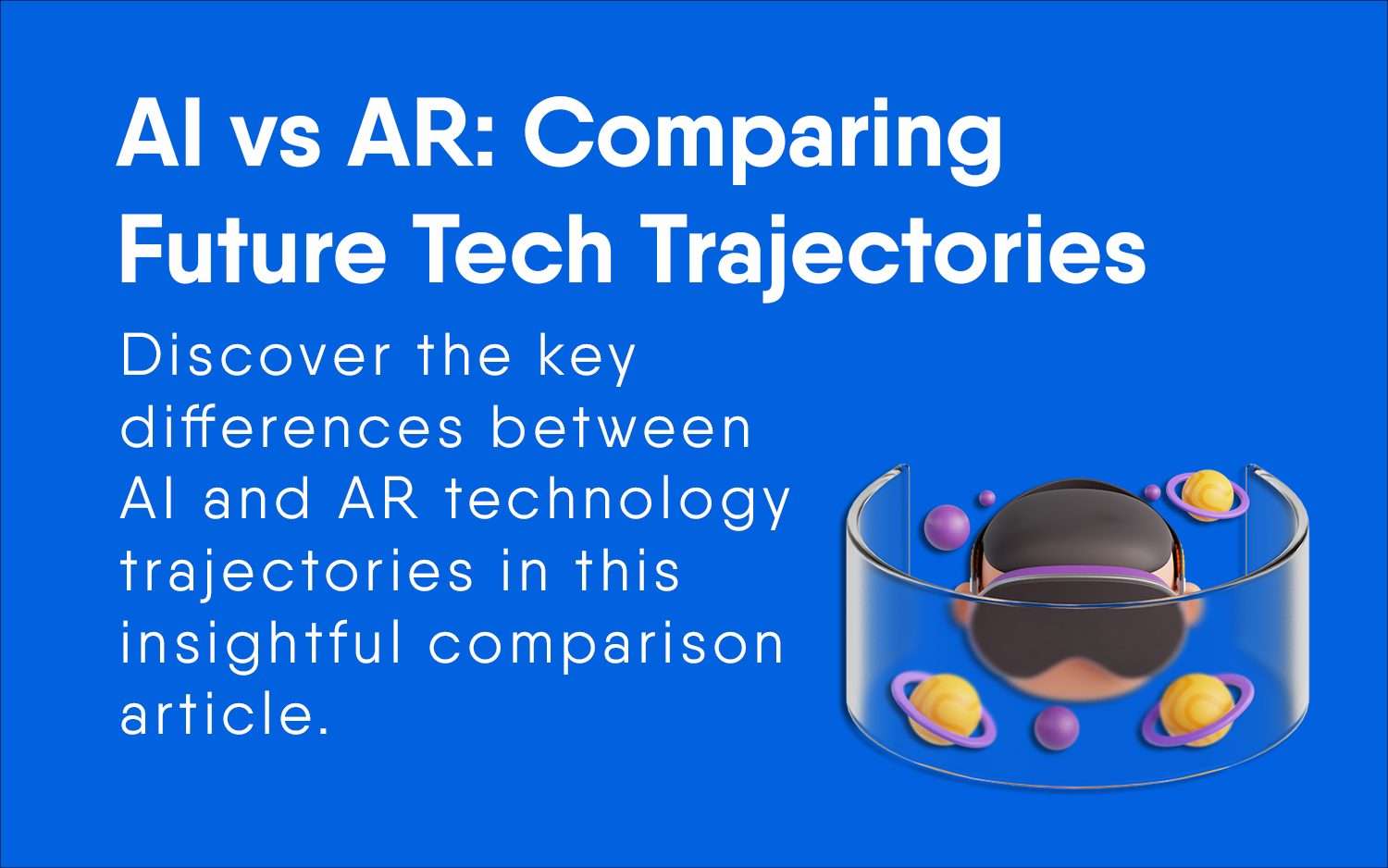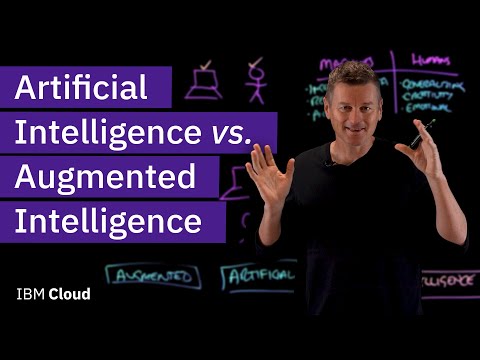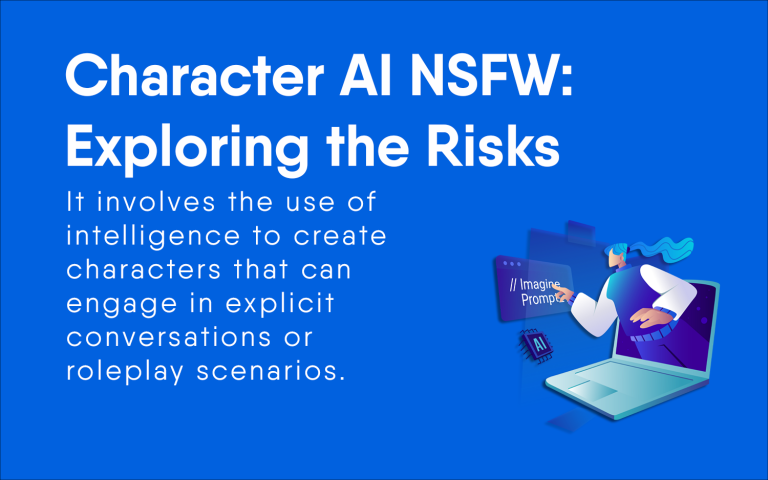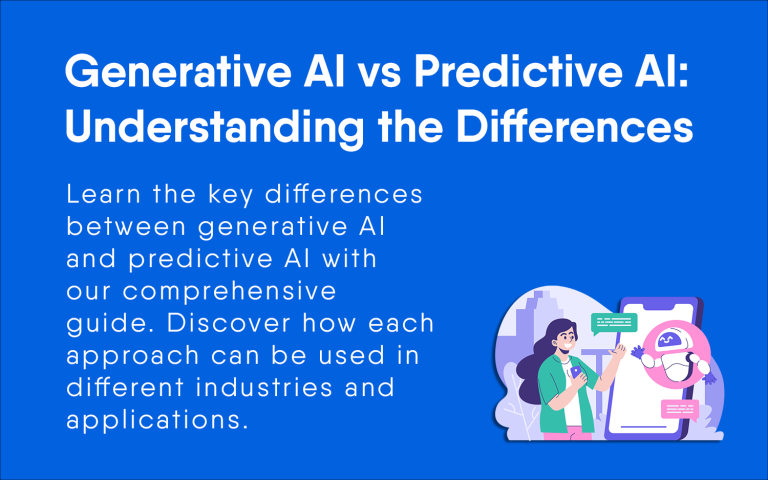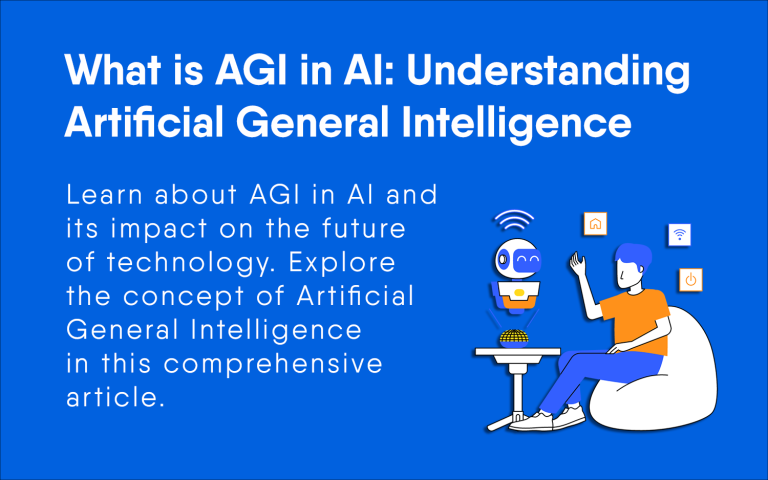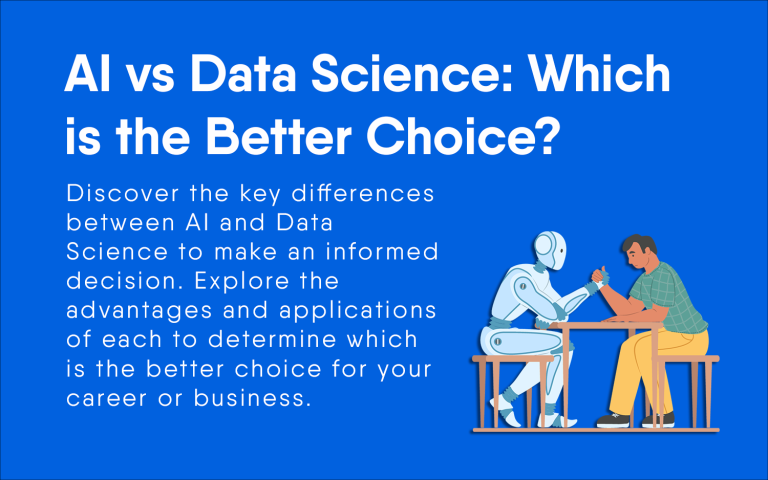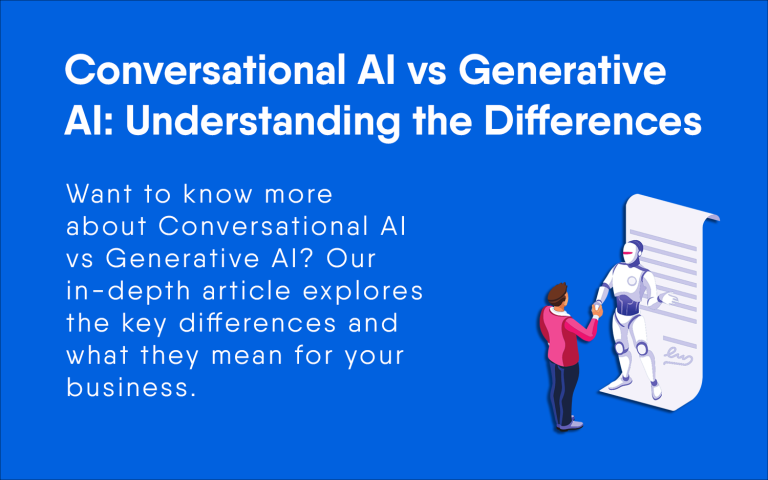AI vs AR: Comparing Future Tech Trajectories
Artificial Intelligence (AI) and Augmented Reality (AR) are two advancements that are reshaping industries and the way users interact with technology. AI refers to the ability of computers or machines to imitate behaviour. It works behind the scenes, enabling machines to learn, reason and process information. This technology is responsible for a range of applications, from algorithms that suggest the song on a streaming platform to complex systems that power self-driving cars.

On the other hand, AR enhances our perception of reality by overlaying data and images onto our physical environment. This creates a view where computer-generated enhancements augment our real-world experiences. AR finds applications in fields like training and assisting with intricate surgical procedures, as well as in retail, where it offers customers the ability to visualize products in their own space before making a purchase.
The convergence of AI and AR hints at a future where there is a growing integration between physical realms. By combining AI’s data processing capabilities with AR’s interface, we can create experiences that are personalized according to preferences and behaviours.
As these technologies continue to advance, they are expected to open up possibilities and reshape how humans interact with both the physical realms.
Understanding AI and AR
In this section, we delve into the intricacies of Artificial Intelligence (AI). Augmented Reality (AR) differentiates their functionalities by exploring their interaction with our surroundings and considering their progress and trends within the field of technology.
Defining Artificial Intelligence
Artificial Intelligence refers to systems or machines that exhibit intelligence to humans. Narrow AI refers to AI systems designed for tasks like voice recognition or image analysis. On the other hand, Artificial General Intelligence (AGI) represents AI with the ability to understand, learn and apply knowledge in contexts, much like human cognitive capabilities.
Exploring Augmented Reality
Augmented Reality (AR) stands in contrast to reality. While Virtual Reality (VR) creates a digital environment, AR overlays digital content onto the natural world environment using devices such as smartphones or AR glasses. This technology enhances users’ perception of and interaction with the world by providing a combined view.
Comparing AI and AR
Despite their functionalities, AI and AR are increasingly interconnected. The combination of AI and AR has brought advancements to the field of computer science. These technologies work together to improve user experiences and make interactions with the world engaging. In turn, AI can enhance AR applications by providing context experiences.
Technological Evolution and Trends
The integration of AI and AR is driving innovation across industries, transforming how businesses operate and how people engage with technology. As these technologies continue to evolve, they have the potential to push the boundaries of what’s achievable, leading to societal impacts.
Applications in Various Industries

AI and AR have found applications in sectors offering increased efficiency and immersive experiences. Companies are leveraging analytics powered by AI and simulations enabled by AR to enhance their operations and improve customer interactions.
Healthcare Innovations
One significant area where AI and AR have made a difference is healthcare. AI tools assist in diagnosing diseases, while AR aids in advanced surgical procedures as well as medical training. The use of AI in surgeries allows for precise control that goes beyond human capabilities. For instance, neural networks employed in healthcare play a role in analyzing medical data.
In the field, augmented reality (AR) is beneficial for trainee surgeons as it provides them with simulations to enhance their skills without putting patient safety at risk.
Educational Enhancements
The education sector also benefits from reality. It can transform classrooms by offering students three-dimensional models that help them better understand complex subjects. Additionally, AI adaptive learning algorithms personalize education by adjusting content to each learner’s pace and comprehension level, potentially improving retention rates and academic performance.
Marketing and Brand Engagement
Marketers use AI to analyze consumer behaviour and create campaigns resulting in increased brand loyalty. By leveraging intelligence, businesses can predict customer preferences. Deliver tailored content that enhances the user experience. Furthermore, AR allows users to visualize products in life before making a purchase, revolutionizing customer service and driving engagement.
Gaming and Entertainment
In the gaming industry, AI is utilized to create adaptive and challenging gaming environments. Machine learning algorithms enable games to evolve based on the player’s style of play, increasing engagement levels. Augmented reality also plays a role by providing experiences that blend real-world elements with digital content, offering gamers interactive and captivating adventures.
Innovations like these not only make entertainment more enjoyable but also open up possibilities for unique user experiences in the gaming world and beyond.
Technical Aspects and Developments

To truly grasp the rapid evolution and impact of Artificial Intelligence (AI) and Augmented Reality (AR) in various industries, it is crucial to understand their technical intricacies.
AI Algorithms and Machine Learning
AI has been revolutionary thanks to algorithms that enable machine learning and deep learning. These algorithms allow systems to learn from data and make predictions. Neural networks, inspired by the brain, process data in layers, boosting the capabilities of chatbots like Alexa and Siri. They also power applications such as facial recognition software used in computer vision systems. These algorithms are key in automating tasks, simulating human intelligence, and pushing boundaries in robotics and engineering.
AR Hardware and User Interaction
AR hardware encompasses a variety of devices with cameras, sensors, and projectors that overlay content onto the world. User interaction with AR is facilitated by advancements in holographic displays and stereoscopic 3D technology; these advancements continue to evolve, creating user experiences.
Take, for instance, the way sensors can detect how users move and make gestures. Additionally, camera systems play a role in interpreting the surrounding environment to position overlays on LED or screen displays.
Software and Design for AI and AR
When it comes to software development and design, the application of AI in augmented reality (AR) is genuinely transformative. AI algorithms can now understand scenes and enhance computer-generated holography, resulting in highly immersive experiences for users. Key AI technologies like language processing and computer vision are driving advancements in creating user experiences. As a result, digital design tools are becoming more sophisticated to support the creation of personalized AR environments.
Ethical Considerations and Future Outlook
The emergence of technologies such as AI and AR brings about considerations. These include concerns about data privacy, potential biases in algorithms, and the social impact of robotics replacing jobs. It is crucial that we carefully examine these issues as they shape the prospects of AI and AR. Additionally, ongoing innovations in fields like computer-generated holography and facial recognition software contribute to shaping this landscape. As these technologies continue to evolve, they hold promise for redefining user experience and engineering practices while also challenging us to address dimensions associated with increasingly autonomous systems.
Integrating AI with AR

The fusion of intelligence (AI) and augmented reality (AR) is opening up possibilities in technology, creating interactive, intelligent and immersive applications. By harnessing AI’s capabilities for learning and perception within AR environments, we are reshaping how people engage with the world.
Enhanced User Experiences
With the integration of AI, augmented reality applications now offer experiences. For example, neural networks, a subset of AI, enable AR technology to recognize individuals’ surroundings, behaviours and preferences. This recognition allows AR systems to adapt in time and deliver tailored content to users. Known examples include Snapchat filters that respond to expressions and virtual try-on experiences that suggest products based on past preferences.
Smart Navigation Systems
By leveraging AI technology, AR is transforming navigation systems for personal and professional use. The spatial awareness and pathfinding algorithms of AI integrated into AR can provide real-time overlay cues on smartphone screens or AR glasses to guide users effectively. This integration ensures enhanced navigation experiences such as Google Maps AR walking directions, which offer guidance towards one’s destination.
Interactive Learning Platforms
The integration of AI and AR is revolutionizing the field of education, making learning platforms more interactive. By combining AI’s natural language processing capabilities with AR cues, students can have learning experiences. These platforms utilize AR to bring content into the world, while AI helps personalize the learning process by adapting to each user’s pace and style. This not only makes education engaging but also tailored to individual needs.
Innovative Healthcare Applications
In the healthcare industry, the fusion of AI and AR is opening up possibilities for professionals. It allows them to view and interact with data in innovative ways. For example, surgeons can use AR technology to visualize time anatomical models during procedures while relying on AI to process extensive medical information accurately and quickly.
By harnessing the combined power of intelligence and augmented reality, we are witnessing advancements in manipulating and enhancing real-world scenarios through technology. This progress brings us closer to realizing Artificial General Intelligence (AGI) in applications.

Faisal Rafique
I’m an accomplished entrepreneur and content creator with a strong background in technology and software engineering. My expertise spans web development, eCommerce, programming, hosting management, technical support, and data science. I hold a Master’s Degree in Computer Science and Engineering, and I have over 5 years of professional experience, which I leverage to grow my digital business and popular blog, FaisalRafique.com

